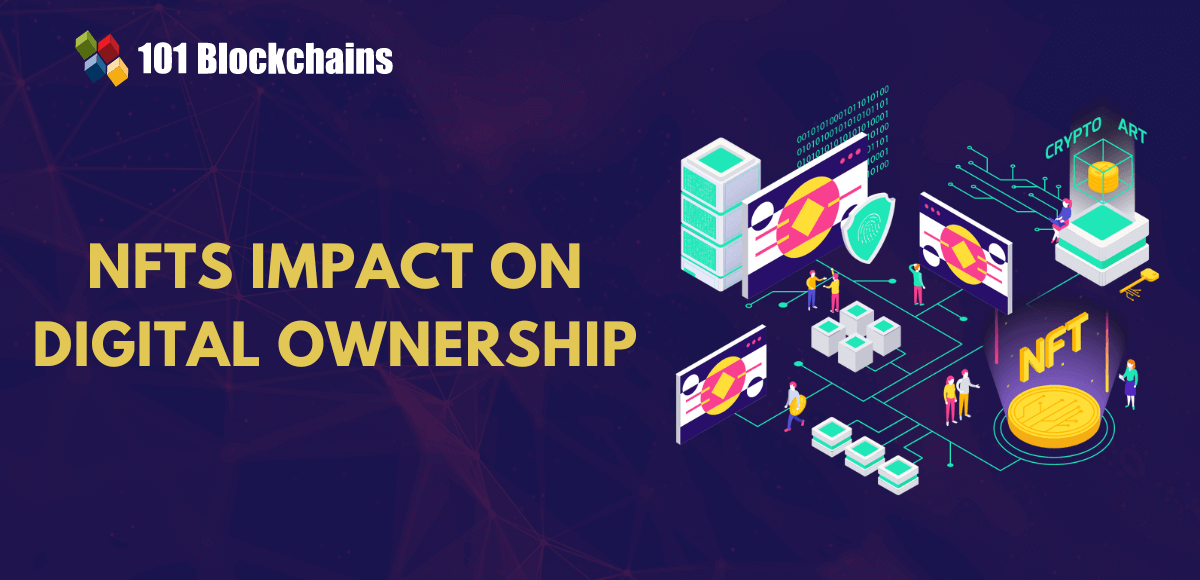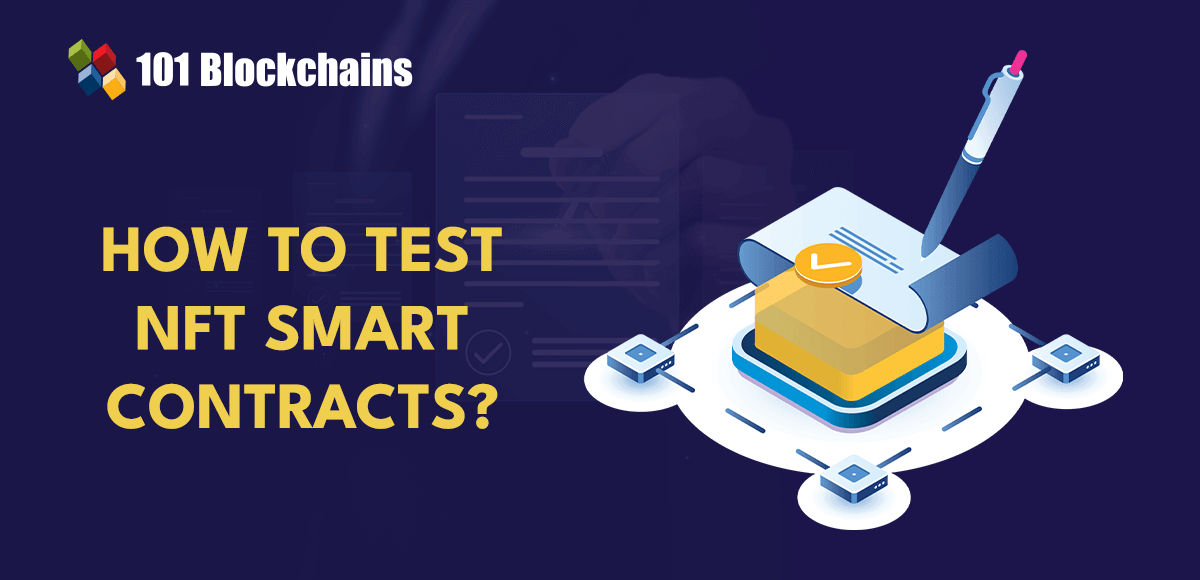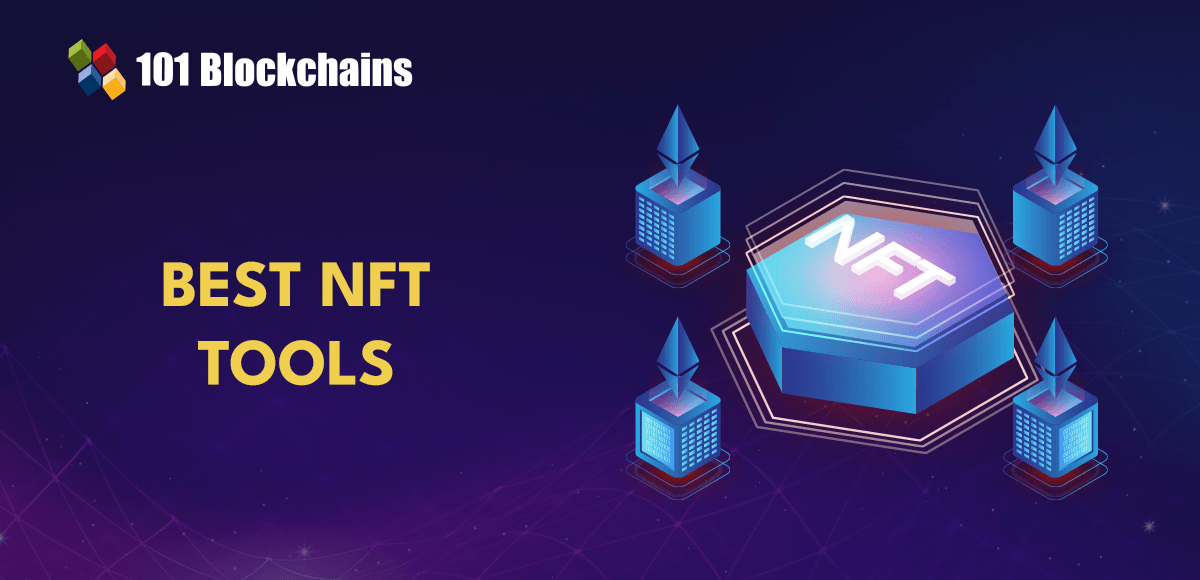Learn how blockchain truly works, master key definitions, and uncover what makes smart contracts so "smart." Dive into the fundamentals, gain valuable insights, and start your blockchain journey today!

- NFT
James Howell
- on March 17, 2023
A Brief History of NFTs
Business executives, developers, and entrepreneurs are working on initiatives for the adoption of a world driven by web3 technologies. The discussions around web3 focus profoundly on how it defines new precedents for the use of technology. One of the most notable applications in the domain of web3 points at non-fungible tokens or NFTs. Some of you may think of answers to “Who came up with the idea of NFTs?” while discussing NFTs. The unique blockchain-based digital assets have revised the conventional notions about ownership, representation, and functionalities of digital assets.
Non-fungible tokens have registered a significant influence on business development and popular culture. Are you curious about the history of NFTs and how they will evolve in the future? The following post offers a detailed guide on the history of non-fungible tokens and how they have evolved into a massive ecosystem. You should learn about the beginning of NFTs and some of the prominent milestones in their evolution. At the same time, the post also reflects on the future prospects for NFTs.
Understand the Definition of NFTs
The definition of NFTs is an important requirement for understanding the evolution of NFTs and their significance. Non-fungible tokens are unique digital assets that have their ownership represented on a blockchain network. Every NFT is unique and one of a kind without the chance of replacing them with another asset. Non-fungible tokens include collectibles, digital art, in-game items, domain names, contract ownership, and event tickets.
The technical definition of NFTs paints them as non-interchangeable data units on a blockchain network. The representation of non-fungible tokens on a blockchain facilitates better assurance of safety against unauthorized tampering, replication, or destruction. In addition, the assurance of ownership verification on a blockchain network offers extrinsic value to NFTs.
Want to get an in-depth understanding of non-fungible tokens (NFTs)? Enroll now in the NFT Fundamentals Course.
Rise of NFT Popularity
The timeline of NFT history started off way back in 2014 with the first NFT, Quantum, created by Kevin McCoy. However, the world noticed non-fungible tokens in 2017. During this time, many unique NFT collections emerged on the foundations of the Ethereum blockchain. The setbacks in NFT trading and ownership transfer with previous blockchain networks had held back the expansion of NFTs. Ethereum blockchain offered a credible solution to problems for NFTs by enabling token creation, programming, storage, and trading. As a result, Ethereum enabled easier onboarding and lower barriers to entry for NFTs.
Before 2021, two prominent factors served a crucial role in increasing price points alongside fuelling public interest in non-fungible tokens. The review of a brief history of NFTs would show you that the important driving factors included the COVID pandemic and high-value NFT artwork sales. The COVID-19 pandemic invited more people to connect with NFT communities on Twitter and other platforms where NFT had garnered significant domination. Another significant highlight in the history of NFTs would always point to the digital artist, Beeple, who auctioned off an NFT for $69 million. Beeple also became the first digital creator to associate with a major auction house for selling NFTs. The remarkable value of the digital art by Beeple invited curiosity regarding non-fungible tokens.
The outline of non-fungible tokens history also involves many other high-value NFT sales after the $69 million sale by Beeple. For example, Edward Snowden created an NFT, Stay Free and sold it for $5 million. Subsequently, a CryptoPunks NFT fetched around $11 million in an auction. Another popular NFT sale in 2021 was the “Right-click and Save As Guy” by XCopy, which fetched $7 million. Digital art and collectibles played a vital role in driving the popularity of NFTs through 2021.
In addition, many new applications of NFTs also gained momentum in this domain for drawing attention towards NFTs. For example, the brief history of non-fungible tokens would highlight the popular NFT-based virtual worlds like Decentraland or NFT-based blockchain games such as Axie Infinity. Another notable highlight in the history of non-fungible tokens points to the association of big brands with NFTs. Many reputed businesses want to launch NFT projects to adapt to web3 technology and new trends. Some of the notable examples of big businesses involved with NFTs include Taco Bell and Coca-Cola. On top of it, other popular brands such as Adidas, Nike, Gucci, Louis Vuitton, and Hot Wheels have shown active interest in non-fungible tokens.
Excited to learn the basic and advanced concepts of ethereum technology? Enroll now in Ethereum Technology Course
Where Did the Story of Non-Fungible Tokens Start?
The economic potential of non-fungible tokens and their innovative use cases have created massive hype for NFTs. You can notice that questions like ‘Who came up with the idea of NFTs?‘ do not find many readers as everyone is attracted by the promises of financial returns. However, the history of non-fungible tokens can provide a clear impression of how technology has evolved over the years. Interestingly, you can learn about non-fungible tokens’ history with a review of the different phases and the notable projects in each phase. Here is an overview of the milestones in the history of non-fungible tokens.
The First NFT
The search for the first-ever NFT created on blockchain refers to the Quantum NFT. It was created on the Namecoin blockchain in 2014 by Kevin McCoy. The Quantum non-fungible token is an image of a pixelated octagon, which changes color and moves like an octopus. The NFT was auctioned off through Sotheby’s for a staggering price of $1.47 million. How is the Quantum NFT relevant in NFT history and evolution? It showed the challenges that early non-fungible tokens had to experience, such as a lawsuit for ownership disputes. The problem emerged from the blockchain on which McCoy had created the NFT. The blockchain for developing the Quantum NFT is Namecoin, which was designed from Bitcoin code. McCoy failed to comply with the need for regular renewal of registrations on Namecoin in 2015.
Another Twitter user registered the NFT ownership before the sale of the NFT in 2021. Therefore, the evolution of NFTs at this stage focused primarily on introducing regulations. Without the appropriate regulations, the ownership dispute could not be settled.
Build your identity as a certified blockchain expert with 101 Blockchains’ Blockchain Certifications designed to provide enhanced career prospects.
Spells of Genesis
As the name implies, Spells of Genesis truly cast a spell for invoking the genesis of NFTs in 2015. Developed over the Bitcoin blockchain, Spells of Genesis emerged as the first NFT trading card game, garnering significant popularity. The Spells of Genesis NFT cards is an important highlight in the brief history of non-fungible tokens as they introduced the fundamental foundations of NFTs. For example, players could have complete control over verifiable ownership of digital assets in the card game. Most important of all, Spells of Genesis established the benchmark for using NFTs in gaming experiences.
The design of Spells of Genesis is quite simple, with each card featuring artwork. Each artwork represents a distinct moment in the history of blockchain. Players could collect and trade the cards or combine the cards to create powerful decks. The game allows players with powerful decks to challenge each other and drives engagement.
Excited to develop an in-depth understanding of solidity’s best practices and the tools needed for developing and testing an NFT marketplace, Enroll now in the NFT Development Course
Rare Pepe Revolution
The next big thing in the non-fungible token’s history points to Rare Pepes, which were created in September 2016. What is special about Rare Pepes in the journey of NFT evolution? The specialty of Rare Pepes is evident in their role in initiating the use cases of NFTs for artwork. Rare Pepes experimented with art on blockchain, which strengthened the roots of the crypto art movement. The role of Rare Pepes in the crypto art revolution started gaining prominence with the introduction of the Rare Pepe Wallet. Joe Looney created the web-based wallet, which operates on the Counterparty blockchain. The wallet introduced better accessibility to Rare Pepes.
Rare Pepes are an inseparable highlight in the brief history of NFTs as they showed the path for NFT trading. At the same time, Rare Pepes also garnered mainstream attention towards NFTs for the first time through popular culture. Initially, users could trade Rare Pepe NFTs on Counterparty only. Once the NFT sales started increasing in 2021, many NFT owners utilized the Emblem Vault protocol for using Rare Pepe NFTs on the Ethereum blockchain. As a matter of fact, many Rare Pepe NFTs operating on Ethereum were sold on the NFT marketplace OpenSea.
The collection of 1800 Rare Pepe NFT cards includes 36 series. However, Series 1 and Card 1 are the most valuable and rarest in the collection. The rarest NFT in the collection pays tribute to Satoshi Nakamoto, the anonymous founder of Bitcoin. Known as the Nakamoto Card, the rare NFT in the collection can offer entry into the exclusive 300 Club, as there are a total of 300 rare NFTs. You can notice how Rare Pepes transformed NFT history by introducing the concept of rarity.
Want to become a bitcoin expert? Enroll Now in Getting Started with Bitcoin Technology Course
CryptoPunks
The list of full-fledged NFT artwork projects which created the NFT PFP trend would start with CryptoPunks, which arrived in 2017. CryptoPunks are a generative NFT art collection developed by Larva Labs. The role of CryptoPunks in the non-fungible tokens history timeline is evident in how they prompted the growth of renowned generative PFP collections. CryptoPunks serve as the foundation of one of the biggest NFT collections, Bored Ape Yacht Club. The collection has emerged as one of the most popular NFT projects. The design of the NFTs involves algorithms that generate unique characteristics for each NFT in the collection.
The importance of CryptoPunks in the evolution of NFTs is visible in how they introduced new technology into the domain of NFTs. Even after the arrival of popular choices such as BAYC NFTs, CryptoPunks have remained one of the most in-demand NFT collections. Any NFT in the collection is an exclusive and rare item within the ecosystem. The value of CryptoPunks is generally in the hundreds of thousands of dollars, while some could fetch millions. Apart from collectors, big brands such as Visa have shown interest in CryptoPunks. At this stage of NFT evolution, the elements of scarcity and demand had arrived on the stage.
Start learning Non-Fungible Token with World’s first NFT Skill Path with quality resources tailored by industry experts Now!
CryptoKitties
While CryptoPunks established a new way to show off NFTs, the next frontier was user engagement. How could NFTs engage users? Spells of Genesis had done its part in introducing the NFT gaming experience. However, CryptoKitties emerged as a prominent chapter in NFT history in 2017 as an Ethereum-based blockchain game. On top of it, CryptoKitties garnered massive media attention at the time of launch. The NFT collectible game enabled players to purchase virtual cats and breed them for trading. Every virtual cat features 12 unique traits, with different traits having different rarity levels. In addition, the breeding mechanics of the game help in passing down the attributes from cats to their offspring. Therefore, every virtual cat in the collection is a unique NFT.
Axie Infinity
If CryptoKitties presented the option for improving user engagement, Axie Infinity set the trend for play-to-earn games. It is the first online video game on the Ethereum blockchain which involves NFTs. The creatures in the game, or Axies, are available as rare NFTs with unique attributes. Players could use the creatures for fighting in battles and building more attributes into the creatures. Axie Infinity is an important milestone in the history of NFTs as it also introduced an in-game marketplace for in-game trading items and the Axie NFTs to other players.
The play-to-earn model is a noticeable highlight of Axie Infinity which enables users to earn in-game rewards for playing the game. The play-to-earn model gained significant traction, thereby encouraging a host of many other NFT-based games. On the other hand, Axie Infinity has received criticism for its generic gameplay. Some gamers also believe that the payout system is similar to gambling.
Learn the concept, elements, future and use cases of NFTs from the E-book: Non Fungible Tokens (NFTS) – A Definitive Guide
Decentraland
The introduction of Decentraland in 2020 was the culmination of 5 years of effort in the project. It is a browser-based game that enables users to purchase and sell virtual land parcels alongside in-game collectibles. The Decentraland Foundation runs the game and has opened up the prospects for using NFTs in metaverse platforms. Decentraland is a vital part of the brief history of non-fungible tokens and enabled the prospects of creating NFT-based virtual worlds. Players could buy and sell avatar wearables, and the estates developed on the virtual parcels of land.
Decentraland facilitated a new avenue for defining NFT ownership. Players would own an NFT, which represents interactive objects that feature value and function. As a result, users could actually use their NFTs rather than just having them sit on blockchain networks. On top of it, it has become the first entry among virtual worlds with community ownership. Most important of all, Decentraland is the first example of a working model for the metaverse. Therefore, Decentraland deserves an honorable mention among the milestones in the evolution of non-fungible tokens.
Conclusion
The important phases in the history of non-fungible tokens offer a clear glimpse of the developments in NFTs. You can always start with questions like “Who came up with the idea of NFTs?” and end up learning about the gradual progression of NFTs. Non-fungible tokens gained different attributes over the years as developed introduced rarity, scarcity, and value in digital assets. The evaluation of NFT history and its milestones showcases the transition of NFTs from mere digital assets into the foundations of engaging virtual worlds. On top of it, the role of NFTs as a web3 technology also proves the necessity to learn more about them. Start learning about NFT fundamentals and find out how to create your own NFT now.
*Disclaimer: The article should not be taken as, and is not intended to provide any investment advice. Claims made in this article do not constitute investment advice and should not be taken as such. 101 Blockchains shall not be responsible for any loss sustained by any person who relies on this article. Do your own research!







